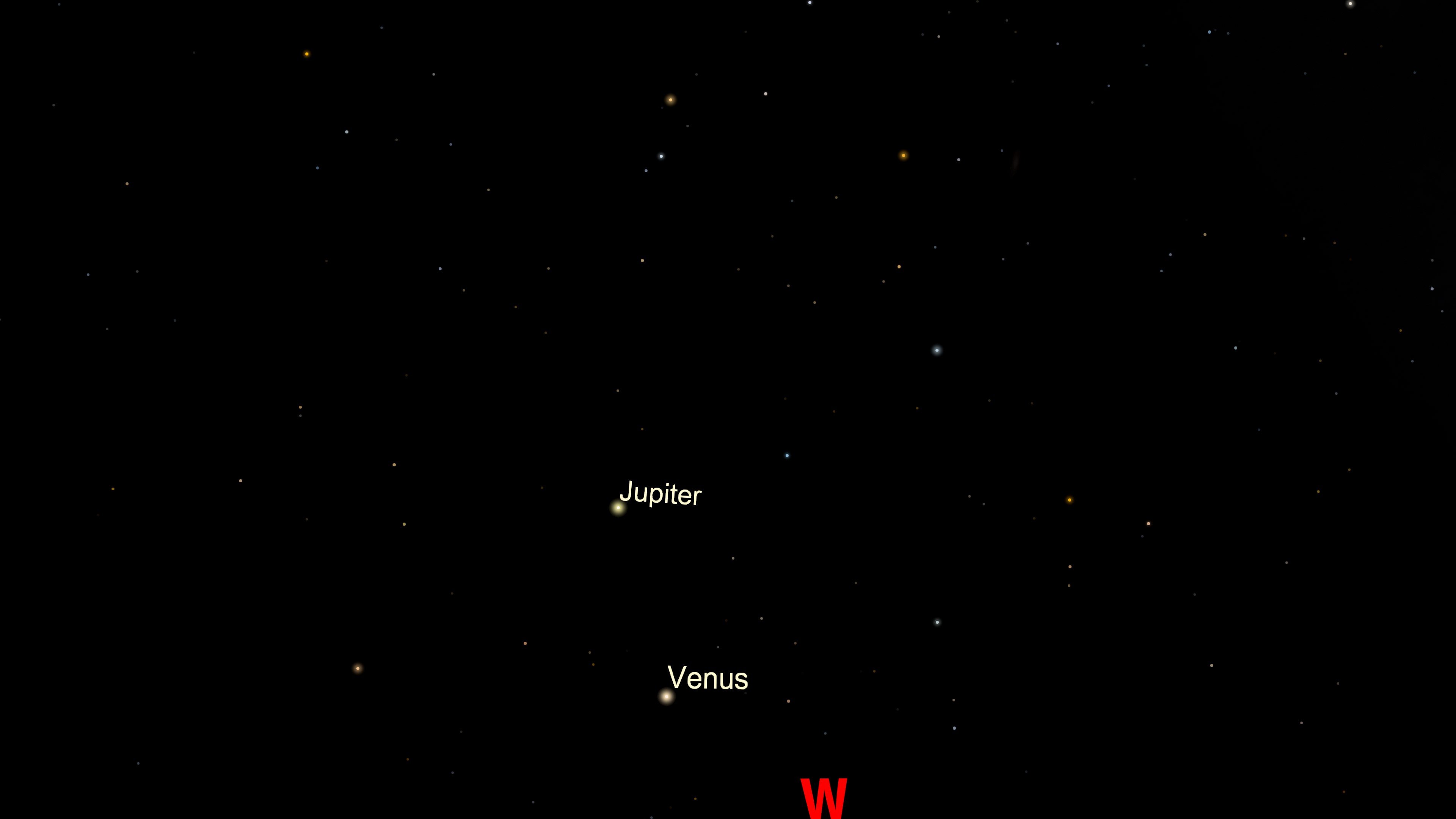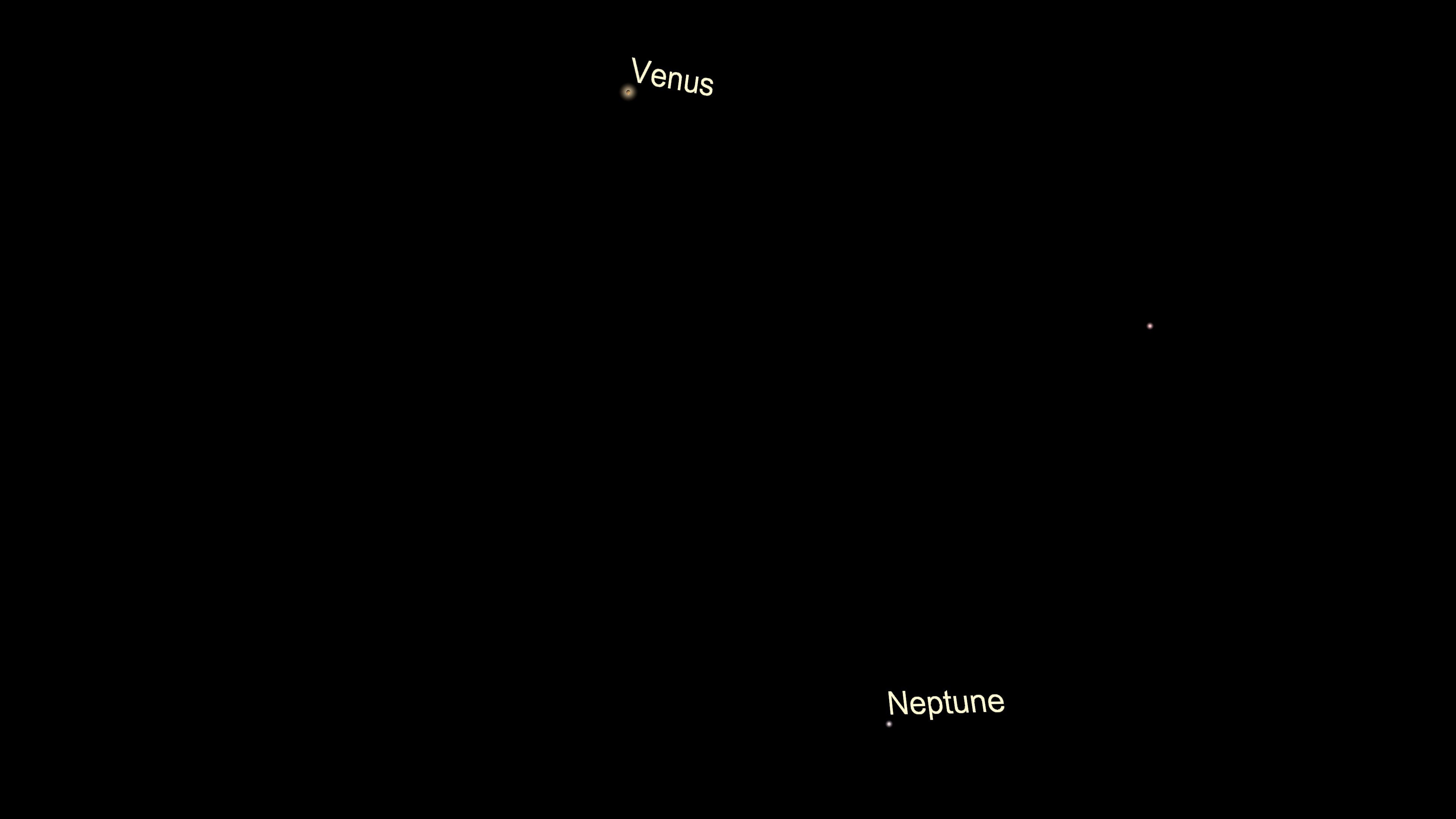Venus continues to be the star of the show this February, shining bright in the western sky after sunset. Look for Venus shining brightly at magnitude -4 between the constellations Capricornus, the sea goat, and Pisces, the fish.

Venus and Neptune appear in the same part of the sky after 1.5 hours after sunset on February 15, 2023.
On February 15, Venus will meet up with the ice giant Neptune in an event known as a conjunction. This extremely close conjunction will bring the planets a mere 45 arcseconds apart at the closest approach. Unfortunately, that occurs in the daytime and will not be visible. By evening, the pair will be less than half a degree apart - about the width of the full Moon - and will be visible together through a telescope.
Neptune is too faint to see with the unaided eye, so a small telescope or good binoculars will be necessary to view it. Neptune will look like a small, blue disk close to the very bright Venus. Through a telescope, we will also see Venus' phase. Currently, Venus is in a waning gibbous phase. Over the next several months, as it catches up with Earth, it will get brighter, though we will see less of the planet. Surprisingly, Venus is at its brightest when it's in a crescent phase!

Venus and Neptune at 200x magnification to simulate the view through a telescope.
Conjunctions occur when two or more planets appear in the same part of the sky as either a single bright point or two points very close together. They occur because nothing in the universe is stationary. We’re all moving! As the planets orbit the Sun, some faster and some slower, they sometimes appear to be chasing one another. Venus seems to move quickly in the sky compared to the more distant planets like Jupiter and Saturn. In fact, Venus will be in conjunction with Jupiter on March 1!
Venus will be easy to spot after sunset shining at magnitude -4, while Neptune shines below the naked-eye limit at 8th magnitude, slightly down and to the right of Venus. Remember, apparent brightness, which astronomers measure as apparent magnitude, is reverse logarithmic. The brighter the star or planet is, the lower its magnitude number.